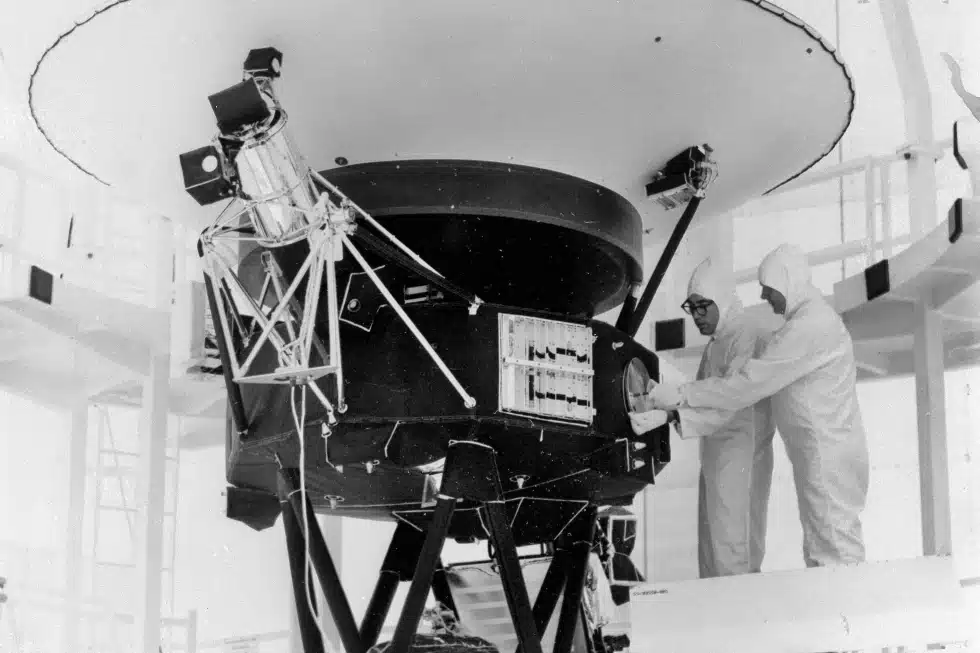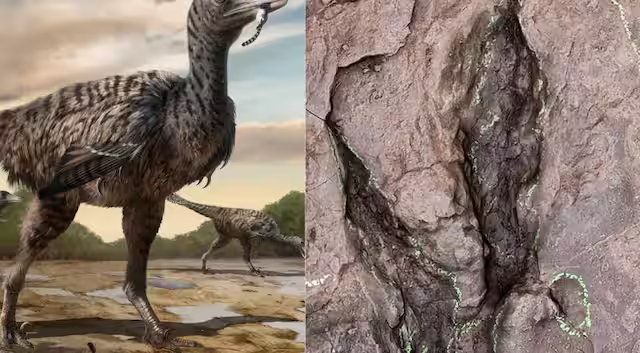Science
The Important Role of Robotics and Automation in Advancing Life Sciences Research
This article delves into the multifaceted role of robotics and automation in advancing life sciences research, exploring key areas of impact and the transformative potential these technologies bring to the forefront.
The Role of Robotics and Automation in Advancing Life Sciences Research
In the ever-evolving landscape of life sciences research, the integration of robotics and automation has emerged as a transformative force, revolutionizing the way experiments are conducted, data is analyzed, and breakthroughs are achieved.
This paradigm shift is not merely about replacing manual tasks with machines but represents a fundamental change in how researchers approach complex biological questions.
This article delves into the multifaceted role of robotics and automation in advancing life sciences research, exploring key areas of impact and the transformative potential these technologies bring to the forefront.
Evolution of Robotics in Life Sciences:
The trajectory of robotics in life sciences represents an evolutionary leap from basic automated systems to intelligent collaborators. Initially, automated liquid handling systems and robotic arms revolutionized laboratory routines, enhancing precision and efficiency.
These early advancements, though rudimentary, set the stage for a paradigm shift. As AI and machine learning seamlessly integrated with robotic technologies, a transformation occurred.
Robotics ceased to be mere tools; they evolved into intelligent entities, capable of intricate scientific collaboration. This evolution marks a watershed moment, where machines transition from executing tasks to actively participating in the scientific journey.
High-Throughout Screening and Drug Discovery:
One of the most notable contributions of robotics and automation in life sciences is evident in high-throughput screening (HTS) and drug discovery. Robotics enables the rapid testing of thousands of compounds, accelerating the identification of potential drug candidates.
Automated systems can meticulously handle intricate tasks such as compound mixing, sample preparation, and assay execution, minimizing human error and significantly reducing the time required for drug discovery.
This streamlined process not only expedites the development of novel therapeutics but also enhances the efficiency of identifying compounds with therapeutic potential.
Laboratory Automation for Efficiency:
Laboratory automation extends beyond drug discovery, encompassing a spectrum of applications that enhance overall research efficiency. Automated liquid handling systems, robotic pipetting platforms, and integrated robotic workstations streamline sample preparation, data collection, and analysis.
These technologies not only mitigate the risk of human error but also ensure reproducibility, a critical aspect in scientific research. Laboratories equipped with automated systems can operate around the clock, accelerating the pace of experiments and data generation.
Robotic Applications in Genomics and Proteomics:
In the dynamic realms of genomics and proteomics, the impact of robotic applications is profound. Robotic systems have become indispensable in DNA sequencing, orchestrating the meticulous handling of samples and reagents.
This automation not only accelerates the sequencing process but also ensures precision and reproducibility. Similarly, in proteomics, robots facilitate high-throughput protein analysis, enabling the comprehensive study of intricate protein interactions and functions.
The marriage of robotics with genomics and proteomics empowers researchers to navigate the complexities of genetic codes and protein structures, unraveling mysteries with unprecedented speed and accuracy.
Advancements in Single-Cell Analysis:
Single-cell analysis represents a frontier in life sciences research, offering insights into the heterogeneity of biological systems. Robotics has played a crucial role in advancing single-cell analysis techniques, enabling the isolation and analysis of individual cells with high precision.
Automated platforms for single-cell RNA sequencing and proteomic analysis empower researchers to explore cellular diversity and identify subtle variations that may be obscured in bulk analysis. These advancements have profound implications for understanding cellular behavior in health and disease.
Robotics and Personalized Medicine:
The intersection of robotics and personalized medicine is a testament to the transformative potential of these technologies in healthcare. Automated systems facilitate the processing of patient samples, from genetic profiling to diagnostic testing, with unprecedented efficiency.
This not only expedites the diagnosis of diseases but also contributes to the realization of personalized treatment plans tailored to individual genetic profiles. The integration of robotics in personalized medicine holds the promise of revolutionizing patient care, moving towards more precise and effective therapeutic interventions.
Challenges and Ethical Considerations:
While the integration of robotics and automation in life sciences research presents immense opportunities, it is not without challenges. Ethical considerations surrounding the use of intelligent systems, data privacy, and the potential displacement of certain manual tasks by automation require careful scrutiny. Striking a balance between embracing technological advancements and addressing ethical concerns is crucial to fostering responsible innovation in the field.
Future Trajectories:
The future trajectories of robotics and automation in life sciences research are marked by continuous innovation and interdisciplinary collaboration. The integration of AI and machine learning algorithms will further enhance the cognitive capabilities of robotic systems, enabling more adaptive and intelligent responses.
Miniaturization of robotic components and the development of modular robotic platforms will democratize access to advanced technologies, making them more accessible to a broader scientific community. Additionally, collaborative efforts between researchers, engineers, and ethicists will be pivotal in shaping the evolving landscape of robotics in life sciences.
Conclusion
The role of robotics and automation in advancing life sciences research is undeniably transformative. From expediting drug discovery to enabling personalized medicine, these technologies are catalysts for groundbreaking discoveries. As we navigate the future trajectories of robotics in life sciences, it is imperative to embrace innovation responsibly, address ethical considerations, and foster collaborative endeavors.
The synergy between human intellect and robotic precision holds the key to unlocking new frontiers in scientific inquiry, propelling us toward a future where the boundaries of what is possible in life sciences research are continually redefined.
SEE ALSO: Scientists Developed New Method ‘AI’ To Locate Planets Far Away From Earth

Science
NASA Switches Off Instrument On Voyager 2 Spacecraft To Save Power

NEW YORK — To save power, NASA turned off another scientific equipment on its long-running Voyager 2 spacecraft.
NASA Switches Off Instrument On the Spacecraft To Save Power
The space agency announced on Tuesday that 2’s plasma science instrument, meant to study the movement of charged atoms, was turned off in late September to allow the spacecraft to continue exploring for as long as possible, which is estimated to be into the 2030s.
NASA turned off a suite of instruments on Voyager 2 and its twin, Voyager 1, after exploring the gas giant planets in the 1980s. Both are currently in interstellar space or the region between stars. The plasma instrument on Voyager 1 stopped working years ago and was finally shut off in 2007.
The remaining four instruments on 2 will continue to collect data on magnetic fields and particles. Its mission is to investigate the regions of space beyond the sun’s protective sphere.
NASA Switches Off Instrument On Voyager 2 Spacecraft To Save Power
It launched in 1977, is the only spacecraft to have visited Uranus and Neptune. It is now more than 12 billion miles (19.31 billion kilometers) from Earth. 1 is more than 15 billion miles (24.14 billion kilometers) beyond Earth.
SOURCE | AP
Science
Hurricane Kirk Could Cause Dangerous Surf Conditions Along The US East Coast

MIAMI — Hurricane Kirk’s waves could generate life-threatening surf and rip current conditions this weekend throughout the United States East Coast, as well as in Bermuda, the Greater Antilles, and the Bahamas, according to forecasters.
Kirk was a Category 3 hurricane in the middle Atlantic Ocean that might grow further but was predicted to stay away from land, according to the Miami-based National Hurricane Center on Thursday.
Hurricane Kirk Could Cause Dangerous Surf Conditions Along The US East Coast
Kirk-generated swells were forecast to reach parts of the Leeward Islands on Friday, Bermuda and the Greater Antilles on Saturday, and the East Coast and the Bahamas on Sunday, according to the center.
No coastal watches or warnings were in effect. The major storm was around 1,130 miles (1,820 kilometers) east of the Leeward Islands, with maximum sustained winds of 125 mph (205 km/h).
Meanwhile, Tropical Storm Leslie formed late Wednesday in the eastern Atlantic and is expected to strengthen into a hurricane in the following days, forecasters said. It was also not considered a threat to the land.
Hurricane Kirk Could Cause Dangerous Surf Conditions Along The US East Coast
The storm was about 540 miles (870 kilometers) southwest of Cabo Verde’s southernmost tip, with maximum sustained winds of 45 mph (75 kph), according to the center.
The storms raged in the Atlantic as rescuers in the United States Southeast sought for missing persons after Hurricane Helene struck last week, leaving a trail of death and devastation.
SOURCE | AP
Science
Giant Fossilised Footprint Of Dinosaur Found in China

(CTN News) – A team of palaeontologists believes they have discovered fossilized footprints of one of China’s largest raptors. The collection of five fossilized dinosaur footprints is half the length of a school bus.
The footprints were discovered in a dinosaur trackway in south-east China in 2020. Scientists believe dinosaurs walked over the muddy river during the Cretaceous period, leaving footprints. Some footprints have been preserved for tens of millions of years.
The dinosaur trackway was unearthed in Longxiang and is around the size of a hockey rink. Some of the footprints are unusually formed, with intact imprints of only two toes.
Fossilised footprint of megaraptor found in China

Giant fossil footprints lead to megaraptor dinosaur discovery in China
Raptors, or predatory birds, are often small and referred to as deinonychosaurs. For example, a Velociraptor is around the size of a turkey. Few raptors, such as the Utahraptor and Dakotaraptor, increased in size significantly, reaching lengths of 5 to 6 metres. The Triassic ichthyosaur was the largest raptor known until now.
According to the scientists, the predator would have attacked its prey with a pair of huge “killing claws” on each foot.
What scientists discovered recently in China is massive, far larger than the largest superpredator known to date.
Scott Persons of the College of Charleston in South Carolina, and his colleagues, added another large raptor to the list. They named it Fujianipus, and they believe it lived in East Asia some 96 million years ago.

Scott Persons at the College of Charleston in South Carolina and his colleagues added another giant raptor to the list. They named it Fujianipus, and they say it lived in East Asia about 96 million years ago. Photograph:(Twitter)
Persons and his colleagues are currently working on areas of Fujianipus’ skeleton, therefore little is known. The investigators only discovered a few of its 36-centimetre-long imprints.
“Preservation conditions were right for footprints but not so great for bones,” Persons said. However, scientists are certain that the footprints belong to a raptor because each one contains the imprint of only two toes, which corresponds to the foot anatomy of raptors. Raptors generally have three toes, but they keep one off the ground to preserve the big claw at the tip from wear and tear.
People believe Fujianipus demonstrates that raptors had the ability to grow much larger and compete with the largest predatory dinosaurs on the landscape at the time – allosauroids, some of which exceeded 10 metres or more in length.
According to Persons, raptors had an advantage over allosauroids in terms of speed. However, without fossilized leg bones, the researchers cannot correctly measure Fujianipus’ speed.
-

 News4 years ago
News4 years agoLet’s Know About Ultra High Net Worth Individual
-
Entertainment2 years ago
Mabelle Prior: The Voice of Hope, Resilience, and Diversity Inspiring Generations
-
News11 years ago
Enviromental Groups Tell Mekong Leaders Lao Dam Evaluation Process Flawed
-

 Health4 years ago
Health4 years agoHow Much Ivermectin Should You Take?
-

 Tech3 years ago
Tech3 years agoTop Forex Brokers of 2023: Reviews and Analysis for Successful Trading
-

 Lifestyles3 years ago
Lifestyles3 years agoAries Soulmate Signs
-

 Entertainment3 years ago
Entertainment3 years agoWhat Should I Do If Disney Plus Keeps Logging Me Out of TV?
-

 Health3 years ago
Health3 years agoCan I Buy Ivermectin Without A Prescription in the USA?
